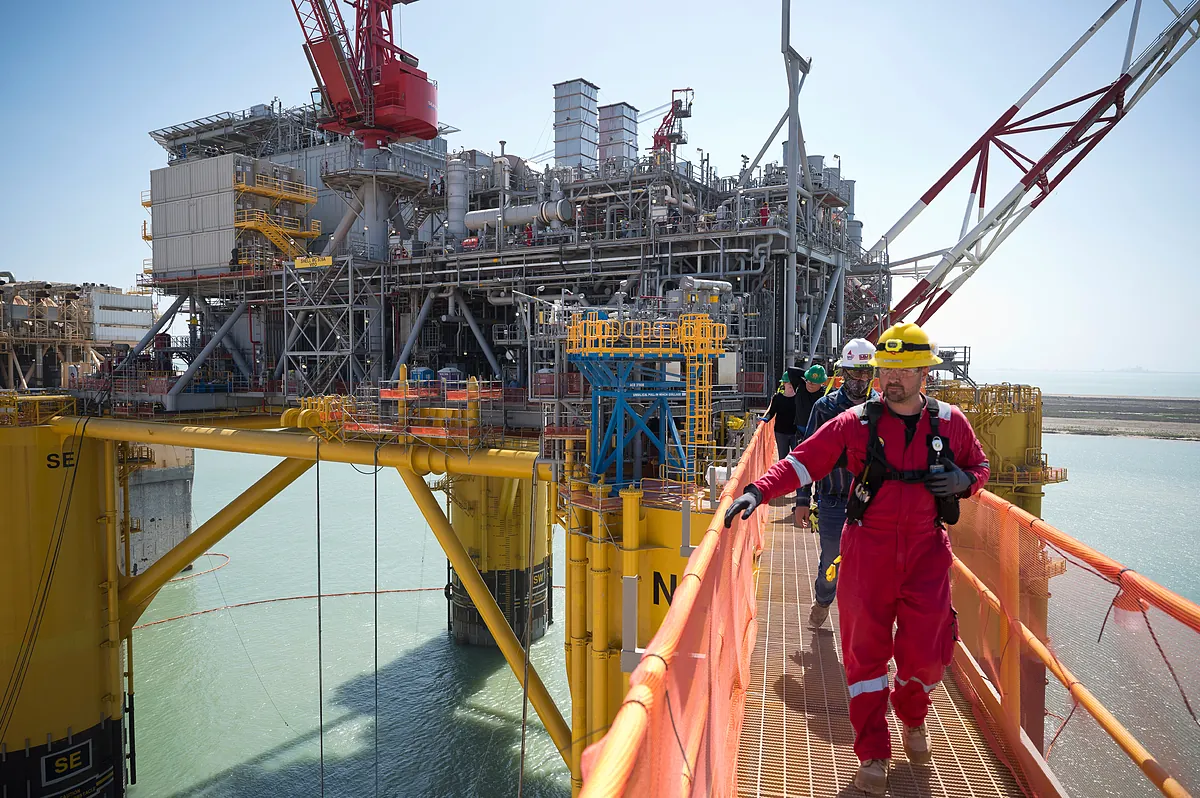Industria Vasca vs Texas: Diferencia de Precio de Energía - Un Análisis Comparativo
Editor’s Note: The significant disparity in energy prices between the Basque Country and Texas has been a topic of much discussion. This article delves into the key factors driving this difference, offering insights for businesses and policymakers alike.
¿Por Qué Importa Esta Comparación?
The contrast in energy prices between the Basque Country and Texas highlights the crucial role energy costs play in industrial competitiveness. Understanding the reasons behind this difference is vital for both regions to attract investment, foster economic growth, and ensure a sustainable energy future. This analysis will examine the key factors influencing energy prices in both regions, including energy sources, regulatory frameworks, and market structures. We'll explore how these factors impact industrial competitiveness and potential strategies for improvement.
Puntos Clave
| Factor | País Vasco | Texas |
|---|---|---|
| Principal Fuente de Energía | Mix de fuentes, con creciente dependencia de renovables | Predominantemente gas natural y petróleo |
| Precios de Energía | Generalmente más altos | Generalmente más bajos |
| Regulación del Mercado | Mercado regulado, con mayor intervención gubernamental | Mercado desregulado, mayor competencia |
| Subsidios e Incentivos | Variables, enfocados en renovables | Variables, enfocados en combustibles fósiles (históricamente) |
| Impacto en la Industria | Mayor coste de producción | Mayor competitividad industrial |
Industria Vasca vs Texas: Un Análisis Detallado
Industria Vasca: Un Mercado Más Regulado
The Basque Country's energy market is characterized by a higher degree of regulation. While this offers some stability, it can also lead to higher prices due to less competition and potentially less efficient resource allocation. The increased focus on renewable energy sources, while laudable from an environmental perspective, has yet to fully offset the higher costs associated with this transition. The dependence on a mix of sources, some of which are more expensive to acquire, contributes to the higher overall energy prices.
Texas: Un Mercado Desregulado y Competitivo
Texas boasts a largely deregulated energy market, fostering greater competition among providers. This competition, coupled with abundant and relatively inexpensive natural gas and oil resources, generally translates to lower electricity prices for businesses and consumers. However, this competitive landscape can also lead to price volatility and potential instability during periods of high demand or supply disruptions.
El Impacto de la Diversificación Energética
The Basque Country's commitment to renewable energy sources is a significant factor in its energy profile. While this is environmentally beneficial in the long term, the transition to a more diversified energy mix presents short-term challenges, contributing to higher costs in the interim. Texas, with its abundant fossil fuel reserves, benefits from lower production costs, even with the volatility inherent to fossil fuel markets.
El Rol de la Regulación
The differences in regulatory frameworks significantly influence energy pricing in both regions. Texas' deregulated market promotes competition, while the Basque Country's regulated approach prioritizes stability and environmental goals. This fundamental difference in approach dictates the overall market dynamics and the resulting price outcomes.
Preguntas Frecuentes (P&R)
Q1: ¿Qué es la principal diferencia entre los mercados energéticos del País Vasco y Texas?
A: La principal diferencia radica en la regulación del mercado: Texas tiene un mercado desregulado y competitivo, mientras que el País Vasco cuenta con un mercado más regulado.
Q2: ¿Por qué los precios de la energía son generalmente más altos en el País Vasco?
A: Los precios más altos en el País Vasco se deben a una combinación de factores, incluyendo la regulación del mercado, una menor abundancia de recursos energéticos baratos, y la transición hacia fuentes de energía renovables.
Q3: ¿Cuáles son las implicaciones para la industria en ambas regiones?
A: Los bajos precios de energía en Texas proporcionan una ventaja competitiva para las industrias, mientras que los altos precios en el País Vasco pueden aumentar los costes de producción.
Q4: ¿Qué desafíos presenta la transición a las energías renovables en el País Vasco?
A: La transición presenta desafíos en términos de costes iniciales y la necesidad de infraestructura adicional para integrar las fuentes renovables a la red eléctrica.
Q5: ¿Existen estrategias para reducir los costes de la energía en el País Vasco?
A: Se podrían explorar estrategias como una mayor diversificación de fuentes renovables, mejoras en la eficiencia energética, y una evaluación crítica del marco regulatorio para optimizar el mercado.
Consejos Prácticos para la Competitividad Industrial
- Optimización de la eficiencia energética: Implementar tecnologías y prácticas que reduzcan el consumo de energía.
- Diversificación de fuentes de aprovisionamiento energético: Explorar opciones de suministro alternativas para reducir la dependencia de una sola fuente.
- Inversión en energías renovables: Aprovechar las oportunidades para integrar fuentes renovables de energía, reduciendo la dependencia de combustibles fósiles a largo plazo.
- Apoyo gubernamental: Buscar incentivos y subvenciones para la transición energética y la mejora de la eficiencia.
- Colaboración público-privada: Fomentar la colaboración entre el sector público y privado para acelerar la innovación y la inversión en nuevas tecnologías energéticas.
Resumen
The significant price difference in energy between the Basque Country and Texas is driven by a complex interplay of factors, including regulatory frameworks, resource availability, and the ongoing transition to renewable energy. Understanding these factors is crucial for policymakers and businesses in both regions to develop effective strategies for enhancing industrial competitiveness and ensuring a sustainable energy future.
Mensaje Final
The energy landscape is constantly evolving. By adapting to these changes and strategically addressing the challenges presented, both the Basque Country and Texas can maintain a competitive edge in the global market. What strategies do you believe are most crucial for long-term energy sustainability and industrial competitiveness?
Llamada a la Acción
Share this article with your network to foster discussion and contribute to a better understanding of this important issue! Stay tuned for future updates on energy market trends.

